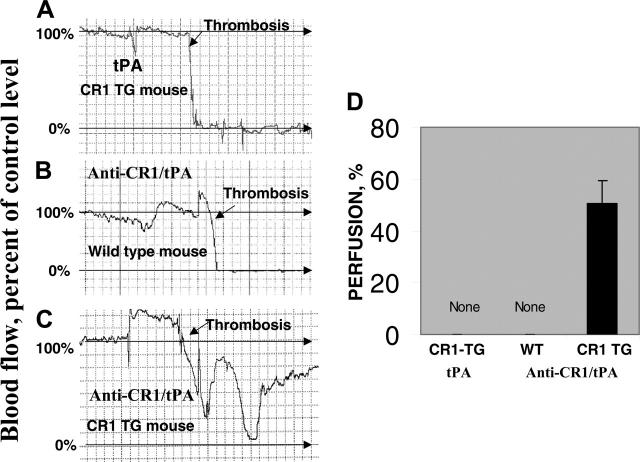Figure 6.
Prophylactic thrombolysis of occlusive arterial clots by anti-CR1/tPA in TgN-hCR1 mice. Occlusive thrombi were formed in the carotid artery of TgN-hCR1 (A, C) or WT (B) mice by applying FeCl3 to the adventitia. Rapid and complete cessation of perfusion was seen in both TgN-hCR1 and WT mice (A, B). Thirty minutes before injury, tPA (A) or anti-CR1/tPA (2 mg/kg tPA) (B, C) was injected. (A-C) Examples of Doppler ultrasound monitoring of blood perfusion. A square unit in the chart corresponds to 160 seconds. (D) Cumulative data of perfusion downstream of the thrombotic site collected in the 3 groups of animals (n = 5 per group). The flow in the vessel prior to thrombosis and the baseline of Doppler signal are considered as 100% and 0% perfusion, respectively. Percent of perfusion in panel D represents the maximal value of flow attained within 30 minutes after thrombosis.

